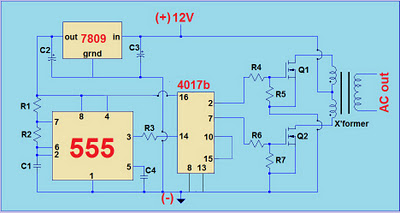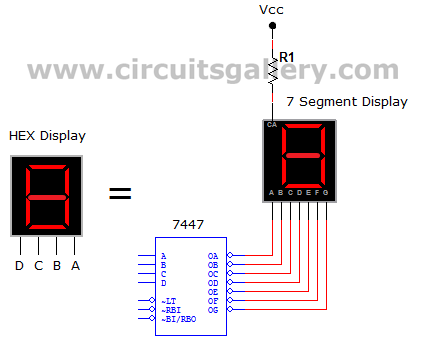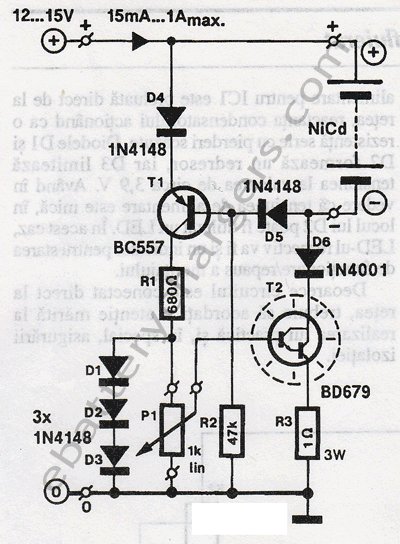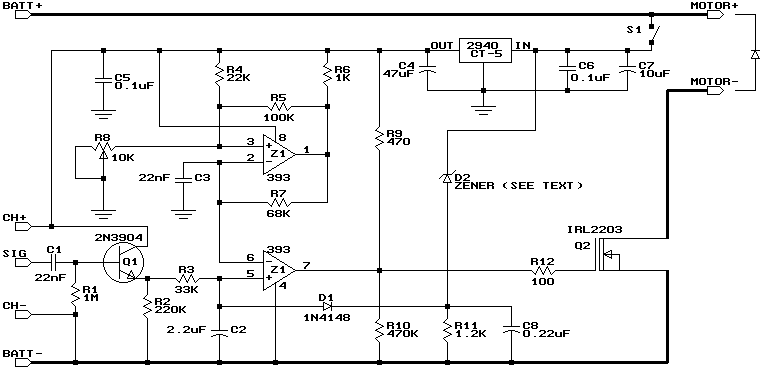
12V Lead Acid Battery Discharge Indicator
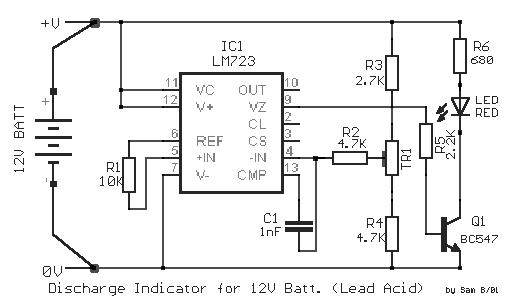
The circuit was designed to provide an indication before a 12 V lead-acid battery reaches a discharged state using an LM723 voltage regulator and a positive NPN standard voltage.
The circuit utilizes the LM723 voltage regulator, which is well-suited for battery management applications due to its ability to maintain a stable output voltage while monitoring the input voltage levels. In this configuration, the LM723 is employed to monitor the voltage of a 12 V lead-acid battery. The circuit is designed to trigger an indication, such as an LED or a buzzer, when the battery voltage drops to a predetermined threshold that indicates the battery is nearing a discharged state.
The positive NPN transistor serves as a switching element in the circuit. When the voltage from the battery falls below the set threshold, the LM723 outputs a signal that turns on the NPN transistor. This action allows current to flow through the indication device, providing a visual or audible alert to the user.
To set the voltage threshold, resistors can be used to create a voltage divider connected to the LM723’s non-inverting input. Additionally, a capacitor may be included to filter any noise from the battery voltage, ensuring a stable reference for the voltage detection.
Overall, this circuit effectively monitors the state of the battery and provides a timely indication to prevent deep discharge, which can significantly prolong the lifespan of lead-acid batteries. Proper component selection and configuration are critical to ensure the circuit operates reliably under varying load conditions and environmental factors.The circuit was designed to produce an indication before a 12 V lead acid battery would reach the discharged state LM723 a positive NPN standard voltage.. 🔗 External reference
The circuit utilizes the LM723 voltage regulator, which is well-suited for battery management applications due to its ability to maintain a stable output voltage while monitoring the input voltage levels. In this configuration, the LM723 is employed to monitor the voltage of a 12 V lead-acid battery. The circuit is designed to trigger an indication, such as an LED or a buzzer, when the battery voltage drops to a predetermined threshold that indicates the battery is nearing a discharged state.
The positive NPN transistor serves as a switching element in the circuit. When the voltage from the battery falls below the set threshold, the LM723 outputs a signal that turns on the NPN transistor. This action allows current to flow through the indication device, providing a visual or audible alert to the user.
To set the voltage threshold, resistors can be used to create a voltage divider connected to the LM723’s non-inverting input. Additionally, a capacitor may be included to filter any noise from the battery voltage, ensuring a stable reference for the voltage detection.
Overall, this circuit effectively monitors the state of the battery and provides a timely indication to prevent deep discharge, which can significantly prolong the lifespan of lead-acid batteries. Proper component selection and configuration are critical to ensure the circuit operates reliably under varying load conditions and environmental factors.The circuit was designed to produce an indication before a 12 V lead acid battery would reach the discharged state LM723 a positive NPN standard voltage.. 🔗 External reference
